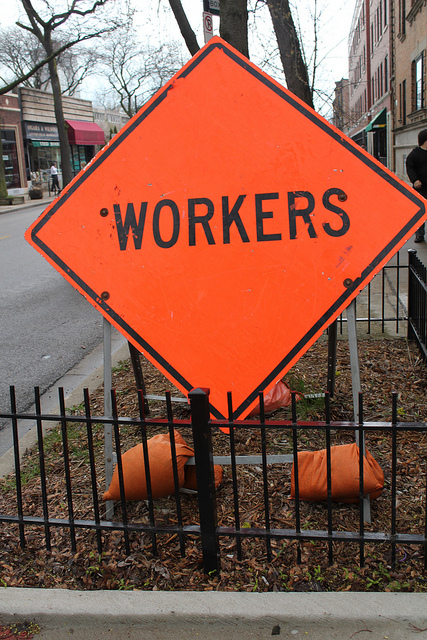Work Authorization Will Continue Only if

Earlier this year, the final rule "Retention of EB-1, EB-2 and EB-3 Immigrant Workers and Program Improvements Affecting High Skilled Nonimmigrant Workers" amended the current regulation regarding the renewal meaning extension of some work permit/ Employment Authorization (EAD) card.
USCIS made it easier for some foreigners in the U.S. who have an Employment Authorized Document (EAD) card to continue to legally work in the country while their EAD cards are in the process of being renewed. If you qualify under the 3 criteria listed below, you will only have to show your expired EAD card and the receipt notice for the renewal confirming timely filing and these documents will be enough for I-9 verification purpose.
In days past, when an EAD card expired, the foreign worker had to immediately stop working even if he or she was in the process of renewing their EAD card. Unless and until the EAD application was approved by USCIS, the employee could not legally show up to work. As you can you imagine, this caused a major headache to both the employers and employees, who had to stop working midstream on a project and could not resume working until USCIS had given its blessing.
This partially changed on January 17, 2017. USCIS issued a rule allowing some EAD holders who have timely filed an EAD renewal application to be automatically granted authorization to legally work in the U.S for up to 180 days after their EAD cards expire.
There are caveats to this automatic-extension program (again: not all EAD-renewal seekers are eligible for this benefit). This post will explain the eligibility requirements of the program.
Who is Eligible for USCIS's Automatic-Employment Extension?
Sadly, not every EAD holder is eligible for USCIS's new automatic-employment extension. So which EAD holders are eligible? Only those holders who have met the following joint three conditions:
- Only those EAD holders who have timely filed an application to renew his or her EAD — This simply means that USCIS has received the EAD's renewal application (assuming, of course, that the EAD holder seeks a work extension) before the EAD's expiration date expires.
- Only people who are applying in the same category can get the 180 days extension. For example, if you have a pending adjustment of status through marriage (C9 category), the EAD card will be valid one year. So if your adjustment of status takes longer than expected, you will have to renew your EAD under the C9 category and you will fall under the 180 days extension rule and
- Only those whose EAD card and the I-797C form share one of the following codes appearing on it: A03 refugee, A05 asylee, A07, A08, A10 withholding of removal, C08, C09 pending I-485 adjustment of status, C10, C16, C20, C22, C24 LIFE, C31 VAWA, and A12 or C19 TPS.
These cryptic-looking codes refer to different categories of EAD-card recipients. They are all listed on the instructions of the form I-765 posted on the USCIS website. The most popular is probably C09 for people who obtain a work permit because they have a pending adjustment of status within the United States. Please note that the code on the EAD may include a "P" such as CO9P but the regulation specifies that the P should be disregarded. The A03 code indicates that an asylum seeker has obtained the EAD work permit; likewise, the A05 code indicates that parents or children of Green-card holders have obtained the work permit, and so forth.
How to Verify One's Eligibility for An Automatic Work Extension
Now that we know who, in theory, is eligible for USCIS's new automatic-work authorization, how do we go about determining whether one qualifies? The process is pretty simple.
- To determine if one has timely filed an application to renew his or her EAD card, all you need to do is compare the expiration date that is listed on the EAD card to the "received" date appearing on the EAD holder's so-called I-797C form (a/k/a Notice of Action). If the received date listed is on or before the "card expires" date on the EAD card, the EAD application is timely. Otherwise it is not.
(The I-797C/Notice-of-Action Form is the standard form that USCIS sends out to acknowledge receipt of an immigration petition.)
- To determine what "code" is listed on one's EAD card, look at the face of the card and look for the "Category" heading. (Hint: It is typically in the third row from the top of the card.)
- To determine if you are renewing in the same category, compare the code listed on your EAD card to the code listed on your I-765 form that you filled out to renew your EAD. The code must match the code listed on the I-765 instructions.
Most I-797C receipt notice do not include the eligibility category. The eligibility category is usually listed only on the approval notice.
USCIS's automatic-work-extension news is welcome news to a subset of EAD holders, who otherwise would have had to stop working until USCIS had completed the process of renewing their EAD cards.
But the program is ridden with caveats. Only if one has renewed his or her EAD card in a timely matter; only people who renew their EAD in the same category; and only if the category is one of the following eligible codes — A03, A05, A07, A08, A10, C08, C09, C10, C16, C20, C22, C24, C31, and A12 or C19 — may the EAD holder be automatically entitled to work in the United States for up to 180 days past the card's expiration date.
Questions? Please contact our office for a free first time consultation.
Source: https://www.visalawyerblog.com/new-changes-law-regarding-ead-work-permits-extensionsrenewals/
Post a Comment for "Work Authorization Will Continue Only if"